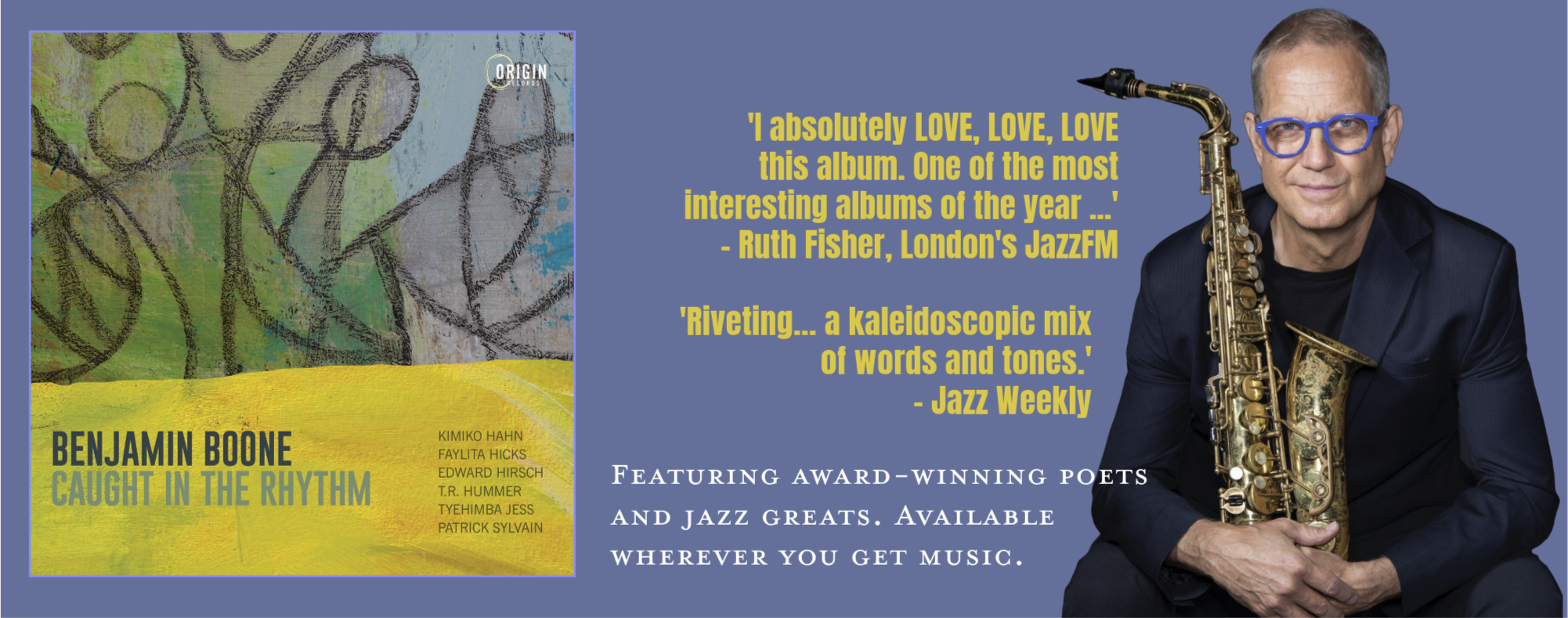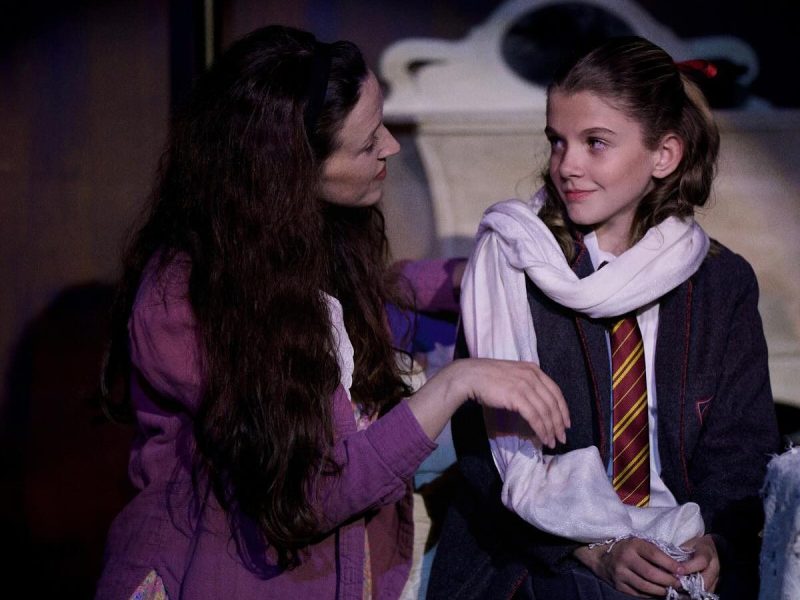There will be blood
THEATER PREVIEW
Chris Hargensen is the bad girl in “Carrie: The Musical.” The character is the evil string-puller in her high school, the alpha-female ringleader who manipulates her fellow students into participating in the most infamous prom-night stunt in horror history. Early on, in the song “The World According to Chris,” she belts out her eat-or-be-eaten philosophy of life:
Guess what, ever since the world began
Same plot, everyone’s been dumping on their fellow man
Pounding people they feel better than

Righteous hand: Carly Oliver plays the mother in “Carrie: The Musical.” Photo / Selma Arts Center
Imani Branch, 18, who plays Chris in the new Selma Arts Center production of “Carrie,” which opens Friday in a central San Joaquin Valley premiere, was taken aback the first time she truly soaked up the cruel machinations and hurtful things said and sung by her character.
“I was reading through my part, and I thought to myself: How could anyone say things this mean to someone? Because I’m not that kind of person,” Branch says. “But at the same time, I know that people are like that.”
When Stephen King published his novel “Carrie” in 1974 about an ostracized high school girl with burgeoning telekinetic powers, a book made even more famous by the 1976 feature film, the term “bullying” wasn’t part of the cultural conversation. Certainly, people then realized that kids can be cruel to each other. (In fact, it was more likely to be accepted and even encouraged as a rite of passage.) But the topic didn’t garner the kind of discussion, and proactive prevention, that it does today.
Still, “Carrie” is very much a story of bullying.
“You have to remember that Carrie is bullied by two different worlds: at home by her mother; and at school by everyone,” says Claudio Laso, director of the Selma production.
◊ ◊ ◊
The musical, which features a book by Lawrence D. Cohen, lyrics by Dean Pitchford, and music by Michael Gorebook, has gone through several incarnations (and drastic rewrites) since first opening on Broadway in 1988. It is indeed an adaptation of the novel and movie, including the iconic prom scene. Carrie White (played in Selma by Abigail Halpern) is taunted at her Maine high school for being different. Mistreated at home as well by her religiously dogmatic mother, Margaret (Carly Oliver, who gets to sing some of the show’s most haunting and powerful songs). It’s not all menace and gloom: There are some upbeat songs, caustic teen humor and a bit of romance thrown in. But when you get down to essentials, it’s the story of an abused young woman called “Scary White” by her classmates.

High school hell: a scene from “Carrie: The Musical.” Photo / Selma Arts Center
Carrie has been hurt by pretty much everyone around her, and she does everything she can to survive and protect herself. As the show opens, one incident triggers the narrative that follows: Carrie’s lack of knowledge about menstruation. Sensing weakness, her fellow students publicly humiliate her.
When I sit and talk a few days before opening night with three of the young stars of the show plus the director, I’m struck by the maturity and fluency with which they speak about the issue of bullying and the sympathy they feel for Carrie.
Laso says he felt moved to cast actors in the show who could connect to the material.
“I made sure to cast people who would know what it feels like to be bullied,” he says. You look at my cast, and you see people of different body types, of different ethnicities, of different degrees of social awkwardness.”
The director is tied to the musical’s material as well.
At 22, he’s only four years out of high school. As an out bisexual, he was singled out.
“I was bullied because of the clothes that I wore, my mannerisms, the way that I acted,” he says. “I would say halfway through high school is when I stopped caring, because I realized you can’t change people’s opinions.”
In the title role is Halpern, 16, a Buchanan High School student. She was bullied as an elementary school student at a Southern California orthodox Hebrew school that she attended from kindergarten to third grade.
Girls weren’t allowed to wear pants, so she added leggings to her outfit when it was cold.
“They would make fun of me and say, ‘Oh, you are a boy,’ and they would say very awful things,” she says. These kids were not even 8 years old yet and they were bullying me. That proves all ages can be cruel.”
Branch wasn’t bullied, but an overweight friend of hers was.
“I wasn’t targeted because I was loud and they knew I would say something right back,” she says. “But I was also taught that it’s important to stand up for other people. I think that’s one of the important messages of the show.”
◊ ◊ ◊
Along with such positive themes, there’s another reason “Carrie” has stayed so relevant to multiple generations: It is, in essence, the ultimate revenge fantasy. Even though Carrie doesn’t have full control over her telekinetic powers, which calls into question her own volition when it comes to fighting back against those who hurt her, the result is the same. She is able to protect herself.
And that, in turn, also makes “Carrie” a cautionary tale.
“I think it speaks to the consequences that when you push someone to their limit, you have to be ready to receive the repercussions,” Branch says. “There’s only so many times you can push someone until they push back. It’s the lesson of karma.”
Another thing that struck me while talking to the cast: the awareness among their own generation about the “Carrie” storyline and its iconic prom-scene climax.

King’s novel might be more than 40 years old, but it’s remained a pop-culture icon. (A 2013 remake of the movie also helped reintroduce “Carrie” to new audiences.)
“I have people tell me, ‘I’m going to have to come see how you pull this off,’” says Caitlyn Lopez, 18, playing Sue Snell, who taunts Carrie at first but then has a change of heart.
“I tell them they’re just going to have to come and find out,” Branch adds.
While acknowledging the iconic nature of the bloody promo scene, Laso says it’s important that the show emerge as something more than just one elaborate visual gimmick.
“It’s one flickering moment of the entire story,” he says. “The play is more interesting than that one moment that happens to her.”
The character of Sue is a nice balance to Chris, the ringleader. Even with the show’s depiction of callous teens, there’s nuance to be found.
In “The World According to Chris,” Sue ventures an alternate view when her friend states that the world is cruel, and that’s the way things are. “But that doesn’t mean it has to be that way,” Sue says. “What does it cost to be kind?”
For Laso, that almost throwaway line is a cornerstone of the show. There are lots of wonderful altruistic reasons for stopping bullying in its tracks and treating your fellow humans with respect and consideration. But perhaps — and is this where Stephen King’s brilliance comes into play? — it’s a matter of self-preservation as well.
“You can think of this story as a big, dramatic way of saying: Be nice to others, because you never know what’s going to happen if you don’t,” Laso says.
Related story
Win tickets to Selma Arts Center’s “Carrie”: To get in the mood, readers submitted their own high-school prom photos
Show info
“Carrie” opens 7 p.m. Friday, July 28, Selma Arts Center, 1935 High St., Selma. Runs through Aug. 6.
To subscribe to the email newsletter for The Munro Review, go to this link:







